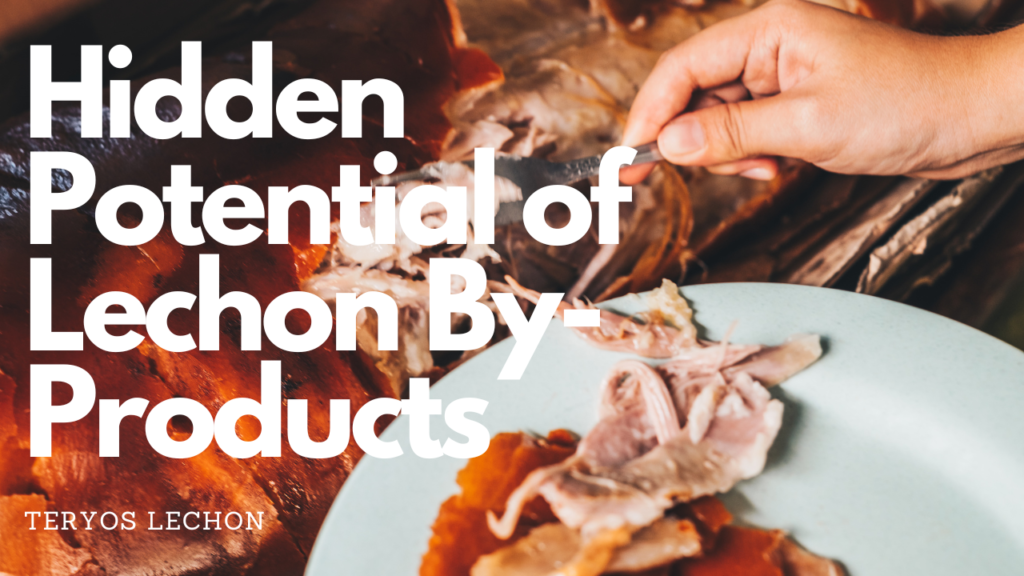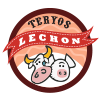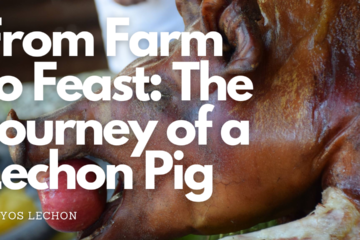Lechon, a traditional Filipino dish, is celebrated for its crispy skin and tender, flavorful meat. While the succulent main portions are the highlight, the process of preparing lechon also generates a range of by-products that are often discarded. However, these seemingly unwanted parts can be transformed into innovative and valuable products, reducing waste and promoting sustainability. In this article, we’ll explore various ways to utilize lechon by-products creatively and effectively.

The Hidden Potential of Lechon By-Products
1. Bones: A Foundation for Rich Broths and Stocks
Lechon bones are often discarded, but they hold immense potential as the base for rich broths and stocks. By simmering these bones, you can extract nutrients and flavors that form the foundation of various dishes.
How to Use:
- Lechon Bone Broth: Slow-cook lechon bones with aromatic vegetables like carrots, celery, and onions, along with herbs and spices. This creates a nutrient-rich broth perfect for soups, stews, and sauces.
- Stock for Adobo and Sinigang: Enhance traditional Filipino dishes by using lechon bone stock as a base, adding depth and richness to the flavors.
2. Skin: Beyond Crispy Delights
Lechon skin, prized for its crispiness, can be repurposed in numerous ways beyond its traditional serving.
How to Use:
- Chicharon (Crispy Pork Skin): Deep-fry the leftover skin to make chicharon, a popular Filipino snack. Season with salt and spices for added flavor.
- Lechon Skin Cracklings: Render the fat from the skin to create cracklings, which can be used as a topping for salads, soups, or even mashed potatoes for an extra crunch.
3. Fat: A Versatile Ingredient
The fat rendered from lechon is a versatile by-product that can be utilized in various culinary applications.
How to Use:
- Lechon Oil: Render the fat to create lechon oil, which can be used for frying or as a flavorful base for cooking other dishes.
- Lard for Baking: Use rendered lechon fat (lard) in baking to achieve flakier pie crusts, tender cookies, and flavorful pastries.
Creative Culinary Innovations
4. Offal: Nutrient-Dense Delicacies
Offal, or the internal organs of the lechon, are often overlooked but are packed with nutrients and can be transformed into delicious dishes.
How to Use:
- Sisig: A popular Filipino dish, sisig is traditionally made from pig’s head and liver. The offal can be finely chopped, seasoned, and sautéed to create this flavorful and spicy delicacy.
- Lechon Dinuguan: Utilize the blood and offal to make dinuguan, a savory blood stew with a rich and tangy flavor profile.
5. Head and Trotters: From Waste to Delicacy
The head and trotters of the lechon, often discarded, can be transformed into gourmet dishes.
How to Use:
- Lechon Paksiw: A sweet and savory stew made from leftover lechon, including the head and trotters, slow-cooked with vinegar, soy sauce, and spices.
- Pig’s Head Terrine: Use the head to make a terrine, a type of pâté, which can be served as an appetizer or main course.
Sustainable Practices and Benefits
6. Reducing Food Waste
Utilizing lechon by-products significantly reduces food waste, contributing to more sustainable culinary practices. By finding creative uses for these parts, we minimize the environmental impact of food production.
7. Economic Benefits
Maximizing the use of lechon by-products can also have economic advantages. By creating additional products from what would otherwise be waste, businesses and households can increase their overall yield and profitability.
Examples:
- Local Markets: Selling by-products like chicharon and lechon oil at local markets can provide an additional source of income for small-scale lechon producers.
- Value-Added Products: Transforming offal and bones into gourmet dishes or packaged goods can open new market opportunities and cater to diverse consumer preferences.
Traditional and Modern Applications
8. Cultural Significance
In many cultures, including Filipino cuisine, using every part of the animal is a traditional practice that honors the food and the effort that goes into its preparation. By reviving these practices, we reconnect with cultural heritage and promote respect for food resources.
9. Modern Gastronomy
Innovative chefs and food enthusiasts are increasingly exploring the potential of lechon by-products in modern gastronomy. This trend not only introduces new flavors and textures but also encourages sustainable dining experiences.
Examples:
- Fusion Cuisine: Combining traditional Filipino lechon by-products with modern culinary techniques to create unique fusion dishes that appeal to a global audience.
- Farm-to-Table Restaurants: Highlighting sustainable practices by incorporating lechon by-products into menus, showcasing the full potential of the animal.
Lechon by-products, often discarded, hold immense potential for innovative culinary uses. From rich broths and crispy snacks to nutrient-dense delicacies and gourmet dishes, these parts can be transformed into valuable products that reduce waste and promote sustainability. By embracing these practices, we not only honor traditional culinary heritage but also contribute to a more sustainable and economically viable food system. So next time you enjoy a delicious lechon, remember that every part of it has the potential to create something extraordinary.




0 Comments